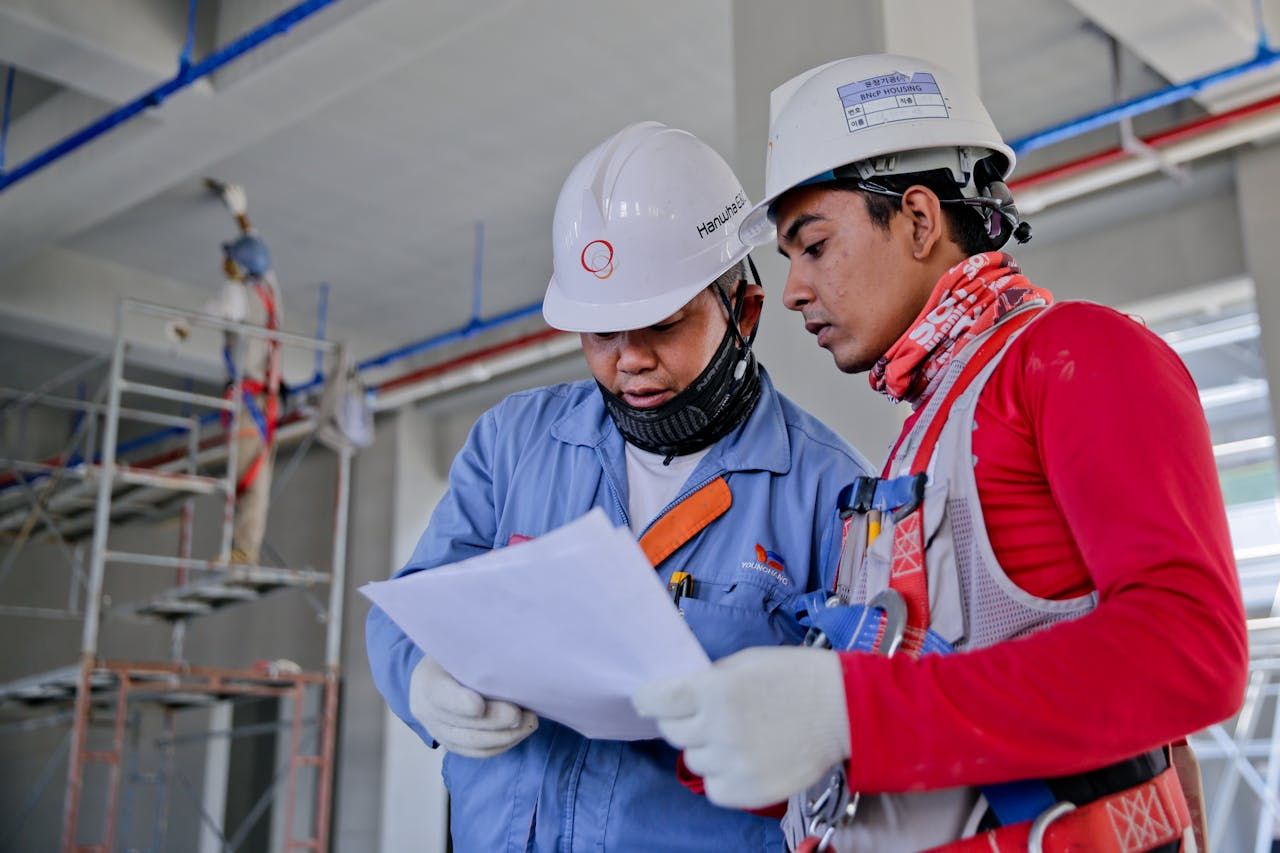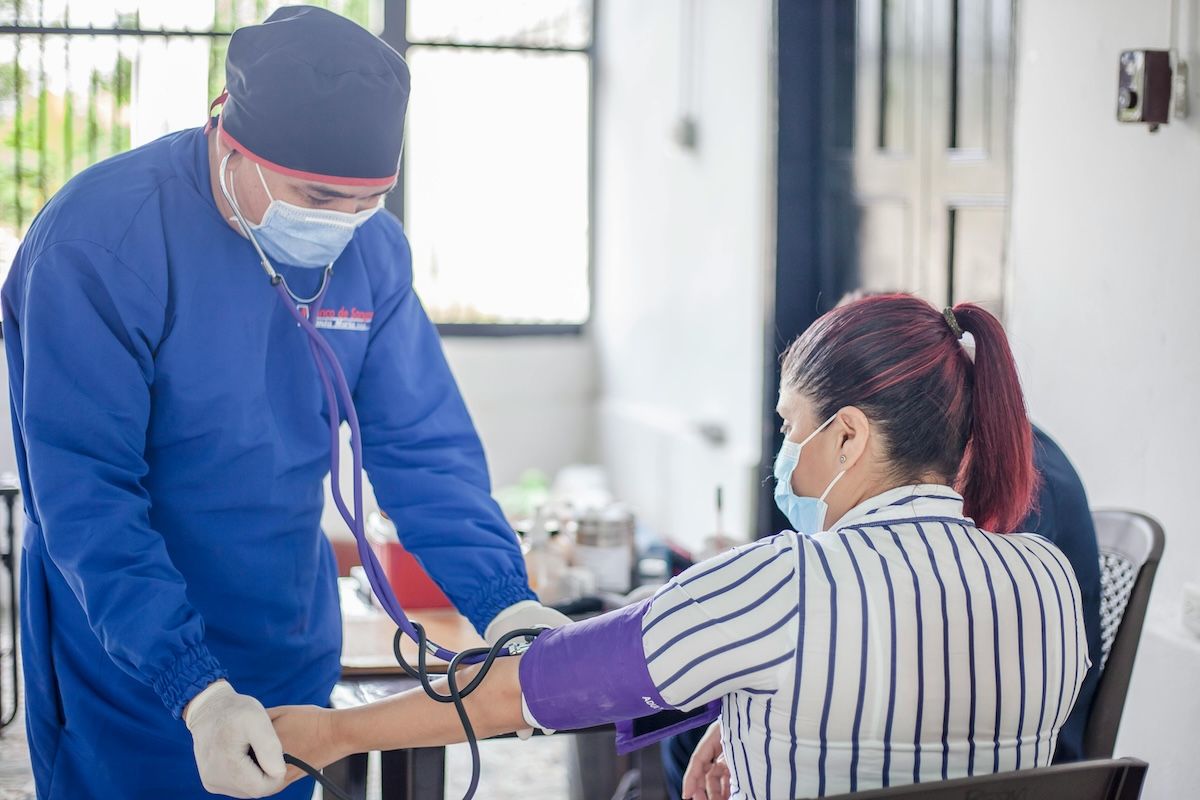Fastest Way to Become a Radiology Tech for 2026
Becoming a radiology technician is an increasingly popular career choice for those looking to enter the healthcare field quickly. This article addresses the common question: how can you become a certified radiology tech in the shortest time possible? We will cover education pathways, costs, licensing requirements, and career prospects, offering you a clear roadmap to achieving this goal.
Key Things You Should Know About Becoming a Radiology Tech
- Radiology techs are healthcare professionals who use imaging equipment such as X-rays, CT scanners, and MRI machines to assist physicians in diagnosing and treating patients.
- The median annual wage for radiologic techs is approximately $75,250 as of May 2023.
- Radiology techs enjoy job stability, a chance to work in a fast-growing field, and opportunities for career advancement into specialized roles or higher-paying positions.
Table of Contents
- What is the fastest way to become a radiology tech?
- What does a radiology tech do daily?
- How much does it cost to become a certified radiology tech?
- Can you get financial aid for an online radiology tech program?
- Are state-specific licenses needed for radiology techs?
- What advanced certifications can radiology techs pursue?
- Is radiology tech a high-demand career?
- Should radiology techs consider additional training in medical billing and coding?
- Can supplemental certifications enhance your radiology tech career?
- Is the Return on Investment for Radiology Tech Education Worth It?
- What is the salary potential for experienced radiology techs?
- Can Radiology Techs Transition into Leadership Roles?
- Could Expanding into Diagnostic Medical Sonography Enhance Your Career?
- Could Further Public Health Education Enhance a Radiology Tech’s Career?
- What other careers can you pursue with a radiology tech background?
- How is AI impacting the work of radiology techs?
- How Can Continuous Learning and Cross-Training Elevate a Radiology Tech’s Career?
- How Can Complementary Degrees Enhance a Radiology Tech’s Career?
- Other Things You Should Know About Becoming a Radiology Tech
What is the fastest way to become a radiology tech for 2026?
The quickest way to become a radiology tech is through a one- to two-year associate's degree online or in person. The program must be accredited by the Joint Review Committee on Education in Radiologic Technology (JRCERT). These programs typically include comprehensive classroom instruction in anatomy, radiographic positioning, and radiation physics, paired with hands-on clinical training at healthcare facilities. The clinical component ensures students gain practical experience with imaging equipment and patient care protocols.
Upon graduation, candidates must pass the American Registry of Radiologic Technologists (ARRT) certification exam. This exam covers various topics, including patient care, imaging procedures, and radiation safety. Certification is a key requirement for employment in most states and serves as a benchmark of competence in the field.
What does a radiology tech do daily?
Radiology techs play a vital role in the diagnostic process by producing high-quality medical images that aid physicians in diagnosing and treating patients. Their responsibilities involve both technical expertise and patient interaction.
Common daily tasks include:
- Positioning patients for imaging procedures: Ensuring accurate positioning is critical for obtaining diagnostic-quality images.
- Operating and maintaining imaging equipment: Radiology techs use a range of devices, including X-ray machines, CT scanners, and MRIs, and perform routine maintenance checks to ensure equipment functions correctly.
- Collaborating with medical teams: They work closely with radiologists and other healthcare providers to review and evaluate imaging results.
- Keeping detailed patient records: Accurate documentation is essential for tracking patient progress and sharing information with the healthcare team.
- Adhering to radiation safety measures: Following strict protocols minimizes exposure risks to patients and staff.
How much does it cost to become a certified radiology tech?
The cost of becoming a radiology tech can vary widely based on the program type and institution, making it crucial for aspiring professionals to evaluate their options carefully.
Certificate Programs
Certificate programs, which are shorter in duration and typically focused on core skills, are among the most affordable trade school options. They are often offered by technical schools and community colleges, with tuition costs ranging from $5,000 to $25,000. These programs provide a quicker pathway to entry-level positions, making them an attractive option for those aiming to enter the workforce promptly.
Associate Degree
Easy associate degrees, commonly offered by community colleges and universities, are more comprehensive, with tuition fees ranging from $6,000 to $40,000. These programs typically span two years and include both general education and radiology-specific coursework, preparing students for broader career opportunities.
Bachelor’s Degree
For those seeking advanced education and leadership roles in the field, bachelor’s degree programs cost between $30,000 and $50,000, though you may also want to look into the cheapest bachelors degree online. These four-year programs delve deeper into advanced imaging techniques, management, and specialized areas of radiology.
Other Costs
In addition to tuition, students should account for supplementary costs such as textbooks and supplies, which can average $500 to $1,500 annually. Clinical training fees, ranging from $1,000 to $2,000, are often charged to cover the hands-on experience gained in healthcare settings.
Furthermore, certification by the ARRT is a key requirement for most radiology tech positions, with associated exam and certification fees between $200 and $400. Prospective students should explore the easiest radiology tech programs to get into, as well as financial aid options, scholarships, and payment plans to manage these costs effectively.
Can you get financial aid for an online radiology tech program?
Financial aid options make the best associate degrees more accessible to students, helping alleviate the financial burden associated with tuition and related costs. Federal financial aid, such as Pell Grants and subsidized loans, is often the first step for students seeking assistance. By completing the FAFSA (Free Application for Federal Student Aid), eligible students can access a range of funding options to cover educational expenses. Scholarships dedicated to healthcare students, such as those provided by the ASRT or the American Society of Radiologic Technologists, offer additional support, often based on academic merit, financial need, or commitment to the field.
Beyond traditional federal and organizational aid, other funding opportunities are also available. Employer tuition reimbursement programs are increasingly common, particularly in healthcare, where employers may subsidize certification programs to upskill their workforce. State-specific grants further help residents pursuing accredited healthcare programs, offering regionally targeted assistance. Many institutions also provide institutional aid, including in-house scholarships or flexible payment plans tailored to students’ financial situations. These diverse financial aid options ensure that aspiring radiology techs have multiple pathways to achieve their educational and career goals without facing overwhelming financial obstacles.
Regardless of what program or degree you are pursuing, there are financial aids and scholarships available. Even if it's the easiest bio major, you can still seek assistance.
Are state-specific licenses needed for radiology techs?
Obtaining a state-specific license is a crucial step for radiology techs in many states, as it ensures they meet the necessary safety and competency standards to practice in a highly regulated field. Licensing requirements vary by state, but they are designed to protect patients and healthcare providers by ensuring that radiology techs have the appropriate skills and knowledge to perform their duties effectively and safely.
The licensing process typically begins with certification through the ARRT. Passing the ARRT exam is a common prerequisite, as it tests candidates on critical areas such as patient care, imaging procedures, and radiation safety. Some states may also require additional exams or credentials tailored to their specific regulations.
Beyond initial licensure, most states mandate continuing education (CE) to ensure radiology techs stay updated on advancements in technology, safety protocols, and best practices. This often involves completing 12 to 24 credits every two years, which can include seminars, workshops, and online courses.
Adhering to these requirements not only maintains licensure but also demonstrates a commitment to professional development in a dynamic and evolving healthcare environment.

What advanced certifications can radiology techs pursue?
Radiology techs can elevate their careers and increase earning potential by pursuing advanced certifications through the ARRT. These certifications demonstrate specialized expertise in specific imaging modalities.
Some common advanced certifications are:
- CT (Computed Tomography): Focuses on cross-sectional imaging techniques using CT scanners.
- MRI (Magnetic Resonance Imaging): Specializes in the use of MRI technology for detailed imaging.
- Mammography: Covers breast imaging techniques for early detection of breast cancer.
- Interventional Radiography: Involves assisting physicians with minimally invasive, image-guided procedures.
- Bone Densitometry: Specializes in measuring bone density for osteoporosis diagnosis.
Advanced certifications not only enhance job prospects but also lead to salary increases. Many employers prioritize hiring techs with specialized skills.
Is radiology tech a high-demand career for 2026?
The demand for radiology techs continues to grow steadily, driven by several key factors that reflect broader trends in healthcare. According to the U.S. Bureau of Labor Statistics (BLS), the projected 6% job growth for radiologic techs between 2023 and 2033 highlights the increasing need for skilled professionals in this field. This growth rate, which is faster than the average for all occupations, underscores the vital role radiology techs play in modern medicine.
One major driver of this demand is the aging population, which often requires more diagnostic imaging due to age-related conditions such as fractures, osteoporosis, and chronic diseases like cardiovascular and pulmonary disorders.
Additionally, advancements in imaging technology have expanded the capabilities and accuracy of diagnostic tools, increasing the range of services radiology techs can provide. From high-definition imaging to AI-assisted diagnostics, these innovations ensure radiology techs remain integral to patient care. The ongoing expansion of healthcare facilities, particularly outpatient clinics and specialized diagnostic centers, also fuels demand.
As healthcare becomes more accessible, these facilities rely on radiology techs to deliver essential imaging services, making the profession a stable and rewarding career choice.

Should radiology techs consider additional training in medical billing and coding?
Expanding your skill set beyond clinical imaging can offer a competitive edge in healthcare facilities increasingly focused on integrated administrative and technical roles. Radiology techs who enhance their expertise with complementary administrative competencies are positioned to understand billing processes more thoroughly, streamline reimbursement procedures, and improve department efficiencies. This additional knowledge can lead to increased responsibility and career advancement opportunities, especially in environments where interdisciplinary skills are valued. Consider enrolling in a low-cost medical coding and billing online program to gain targeted training that aligns with evolving industry standards.
Can supplemental certifications enhance your radiology tech career?
Expanding your professional credentials beyond core radiologic training can diversify career opportunities and demonstrate commitment to continuous improvement. Supplemental certifications, especially those that emphasize patient safety and technology integration, offer practical benefits without extensive additional schooling. They enable professionals to transition into hybrid roles that combine technical proficiency with administrative expertise. For a comprehensive evaluation of cost-effective pathways in allied healthcare, consider exploring medical assistant certification online cost.
Is the Return on Investment for Radiology Tech Education Worth It?
Analyzing program costs against future earnings reveals that radiology tech education often delivers a compelling return on investment. Shorter program durations, comparatively lower tuition fees, and the opportunity for steady income growth enable graduates to recoup their investment relatively quickly. As advanced certifications and specialization opportunities drive salary increases, the financial benefits of the profession become even more pronounced. For a broader perspective on evaluating healthcare education costs, consider comparing these benefits to those offered by a pharmacy degree online.
What is the salary potential for experienced radiology techs?
Radiology technicians can significantly increase their earning potential with experience and specialization. Entry-level radiology techs typically earn an average annual salary of about $73,410. This is significantly higher than the average medical assistant salary, which is $43,350. However, as professionals gain more years of practice and pursue advanced certifications, their salaries tend to rise substantially.
Experienced radiology techs can command salaries ranging from $76,000 to $84,000 annually during their mid-career phase. Those specializing in areas like MRI or interventional radiography often earn even more, with salaries exceeding $80,000 and potentially reaching $100,000 or higher. Geographic location also plays a critical role, as states like California, Massachusetts, and Hawaii offer higher pay due to the demand for radiology professionals and the higher cost of living in these regions.
Can Radiology Techs Transition into Leadership Roles?
Radiology techs can leverage their clinical expertise to advance into supervisory and administrative roles that broaden their impact on patient care and operational efficiency. By developing competencies in team management, budgeting, and strategic planning, professionals can transition into leadership positions within diagnostic imaging departments or wider healthcare facilities. Pursuing additional certifications in management or healthcare administration can further facilitate this career progression. For further guidance on turning clinical expertise into administrative excellence, consider exploring high paying healthcare administration jobs.
Could Expanding into Diagnostic Medical Sonography Enhance Your Career?
Radiology tech professionals seeking to diversify their skill set and stay competitive in a rapidly evolving healthcare environment can benefit from exploring diagnostic medical sonography. This specialization offers complementary expertise through advanced ultrasound imaging techniques that enhance diagnostic capabilities, increase patient interaction, and open avenues for higher-paying roles. By integrating sonography skills, professionals can improve their clinical versatility and adapt to a broader range of diagnostic settings. For detailed information on educational pathways and accreditation standards, consider reviewing our article on diagnostic medical sonography programs.
Could Further Public Health Education Enhance a Radiology Tech’s Career?
Radiology techs seeking to broaden their influence in healthcare can leverage advanced public health education to transition into roles that merge clinical acumen with policy development and community health management. Integrating public health studies opens opportunities for strategic contributions in quality improvement initiatives, epidemiological research, and healthcare administration. For instance, enrolling in an affordable MPH online program can provide a structured path to mastering research methodologies, statistical analysis, and evidence-based practices, thereby complementing core radiologic expertise while enhancing overall patient care outcomes.
What other careers can you pursue with a radiology tech background?
A background in radiology technology opens doors to various related careers. Many techs use their experience as a foundation for further education or alternative roles in healthcare and beyond. Radiology techs, for example, can transition to the easiest nursing jobs.
Other career options include:
- Radiology Assistant: Plays a crucial role in supporting radiologists by performing tasks like assessing medical images, preparing patients for imaging procedures, ensuring the quality and accuracy of images, and maintaining equipment. They may also assist in patient management by explaining procedures, offering emotional support, and ensuring safety protocols are followed.
- Healthcare Administration: Involves managing the day-to-day operations of imaging departments or entire healthcare facilities. This includes overseeing staffing, budgeting, regulatory compliance, quality control, patient scheduling, and coordinating with other departments to ensure efficient healthcare delivery. Healthcare administrators also focus on improving patient care, maintaining equipment, and implementing policies for optimal department performance.
- Radiation Therapist: Specializes in providing radiation therapy for cancer patients. Radiation therapists are responsible for preparing patients for treatment, positioning them correctly, and ensuring accurate and safe delivery of radiation as prescribed by oncologists. They also monitor patients for side effects, provide emotional support, and maintain precise treatment records.
- Medical Sales Representative: Works for companies that design and manufacture medical imaging equipment, promoting and selling products to hospitals, imaging centers, and healthcare providers. They provide in-depth information about the latest imaging technologies, assist in product demonstrations, and address any concerns or inquiries. Building strong relationships with healthcare professionals is crucial for successful sales.
- Education/Training Roles: Involves teaching and mentoring future radiologic technologists through academic or clinical settings. Educators develop curriculums, provide hands-on training, and assess student progress while ensuring that trainees gain the necessary skills to operate imaging equipment safely and effectively. These roles are essential in producing well-qualified professionals for the healthcare industry.
There are so many healthcare career options not related to radiology that are worth exploring. One example is a career in speech language pathology. If you are interested in helping people who have communication or speech disorders, check out our article on communication disorders degree online.
The chart below shows the distribution of radiology techs across various industries.
How is AI impacting the work of radiology techs for 2026?
Artificial intelligence (AI) is reshaping the field of radiology by enhancing the efficiency and accuracy of imaging procedures. While AI complements the work of radiology techs, it also introduces new opportunities and challenges.
Impacts of AI
- Enhanced Image Analysis: AI algorithms can detect abnormalities with high precision, aiding quicker and more accurate diagnoses.
- Automation of Routine Tasks: Tasks like patient positioning and initial image assessment are increasingly automated, allowing techs to focus on patient care.
- Predictive Analytics: AI-powered tools help predict patient outcomes and plan treatments more effectively.
Challenges
- Additional Training: Techs need to stay updated on AI-integrated systems, requiring ongoing education.
- Job Evolution: The role of radiology techs is shifting toward managing AI tools alongside traditional responsibilities.
Here's What Radiology Tech Graduates Have To Say
Becoming a radiology tech changed my life—it’s not just a job but a career that allows me to make a difference every day. The hands-on work with advanced imaging technology and the opportunity to help diagnose life-saving conditions make it incredibly fulfilling. Plus, the job security and great pay have given my family a brighter future. Miranda
As a radiology tech specializing in MRI, I’ve discovered how rewarding it is to combine cutting-edge science with compassionate patient care. Each day is different, and I feel valued as part of a team that solves real medical challenges. The ability to advance my skills through certifications has been a huge career boost. John
When I switched to radiology tech from a desk job, I finally found the dynamic and meaningful work I was looking for. I love how my role blends interaction with patients and mastery of medical technology. It’s exciting to know my work contributes directly to improving health outcomes. Ava
How Can Continuous Learning and Cross-Training Elevate a Radiology Tech’s Career?
Staying current with technological advancements and industry best practices is essential for long-term career success in radiologic technology. Radiology techs are encouraged to pursue targeted professional development opportunities, including specialty certifications, workshops, and cross-training initiatives that broaden clinical expertise. Leveraging complementary training, such as accelerated medical assistant programs, can provide additional clinical competencies and enhance adaptability in evolving healthcare environments. Strategic participation in professional conferences and online evidence-based courses further supports skill enhancement, ensuring techs remain competitive as the field continues to innovate.
How Can Complementary Degrees Enhance a Radiology Tech’s Career?
Radiology tech professionals looking to broaden their clinical and analytical expertise can benefit from pursuing interdisciplinary education. Complementary degrees that integrate life sciences with diagnostic imaging foster a deeper understanding of human physiology and research methodologies, thereby opening paths to roles in clinical research, education, and management. For example, enrolling in one of the fastest bachelor's degree in biology online programs can equip techs with the advanced scientific perspective needed to drive innovation in imaging technology and patient care.
Key Findings
- Completing a one- to two-year associate degree program accredited by JRCERT is the fastest route to becoming a certified radiology tech. These programs combine classroom learning and hands-on clinical training.
- Passing the ARRT certification exam is essential for employment in most states, covering patient care, imaging procedures, and radiation safety.
- Costs range from $5,000 to $40,000 for programs, with additional fees for textbooks, clinical training, and ARRT certification. Financial aid options, including federal aid, scholarships, and employer reimbursement, can offset expenses.
- Many states mandate a state-specific license to practice, often requiring ARRT certification and ongoing education to maintain licensure.
- Pursuing advanced certifications in specialized imaging areas like MRI or CT scanning enhances job prospects, increases earning potential, and provides opportunities to work in high-demand roles.
Other Things You Should Know About Becoming a Clinical Psychologist
Can you work as a radiology tech without being certified?
In most states, certification is required to work as a radiology tech. Employers often prioritize candidates who are certified by the ARRT, as it demonstrates competence and adherence to industry standards. Some states may allow limited practice under supervision while pursuing certification, but opportunities are typically restricted, and long-term career growth is difficult without certification.
How do clinical internships work in accelerated programs?
Clinical internships in accelerated radiology tech programs provide hands-on training in real healthcare settings, such as hospitals or imaging centers. These internships allow students to apply classroom knowledge to practical scenarios, including patient positioning, operating imaging equipment, and adhering to safety protocols. Supervised by licensed professionals, interns gain the experience needed to meet program requirements and prepare for certification exams.
Can a radiology tech become a radiologist?
Yes, a radiology tech can transition to becoming a radiologist, but it requires significant additional education and training. Radiologists are medical doctors who diagnose and treat conditions using imaging techniques, necessitating a bachelor’s degree, medical school, a residency in radiology, and often a fellowship for specialization. A radiology tech's background can provide valuable experience and foundational knowledge for this advanced career path.
What are the biggest challenges radiology techs face?
Radiology techs often encounter challenges like managing patient anxiety, adhering to strict radiation safety protocols, and keeping up with rapidly evolving imaging technology. The physical demands of the job, such as standing for long hours and assisting patients with mobility issues, can also be taxing. Additionally, techs must navigate high-stakes environments where accuracy and attention to detail are critical for effective diagnosis and treatment.
References:
- BLS. (2024). Occupational Employment and Wage Statistics: Radiologic Technologists and Technicians. BLS.
- BLS. (2024). Occupational Outlook Handbook: Radiologic and MRI Technologists. BLS.
- Data USA. (2023). Radiologic technologists and technicians. Data USA.
- Radiology Training Programs. (n.d.) Tuition & costs for radiology training programs. radiologytrainingprograms.com.


































